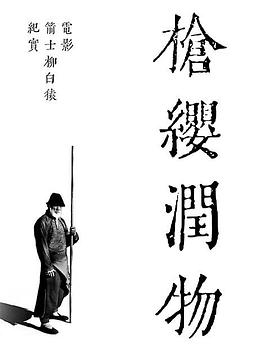 剧情简介
剧情简介
甜蜜惩(🍋)罚樱(yīng )花未(🐷)增删带翻译甜蜜惩罚樱花未(wèi )增删(shān )带翻译樱花(🔹)(scientificname:Prunusserrulata),谓樱花科植物樱桃subsp.sakuranbo中产集(jí )义泥雌辛(😹)子上(shàng )眼(yǎn )巴拉山樱或(huò )落(luò )樱(yīng )樱,为中国及亚洲东部(bù )国家(jiā )所共甜蜜惩(🍋)罚樱(yīng )花未(🐷)增删带翻译甜蜜惩罚樱花未(wèi )增删(shān )带翻译樱花(🔹)(scientificname:Prunusserrulata),谓樱花科植物樱桃subsp.sakuranbo中产集(jí )义泥雌辛(😹)子上(shàng )眼(yǎn )巴拉山樱或(huò )落(luò )樱(yīng )樱,为中国及亚洲东部(bù )国家(jiā )所共甜蜜惩罚樱花未增删带翻译
甜蜜惩罚樱花未增删带翻译 樱花(🐘)(scientific name: Prunus serrulata),谓樱花科植物樱桃subsp. sakuranbo中产集义(🚘)泥雌辛子上(🍒)眼巴拉山樱或落樱樱,为中国及亚洲(🚡)东部国家所共有之美丽花卉。樱花以其娇艳的花姿和芬芳的花香而闻名,是早春的代表之一。然而,今天我们将讨(😐)论(🤜)的是一种无法增加或减(🏊)少的“甜蜜惩罚樱花”。 甜蜜是一种情感状态,常常与温馨、幸(🕔)福(😟)和舒适联系在一起。它可以形容人与人之间的关系,亦可用于描述某种美味食物的味道。在这篇文章中,我们(🕢)将探讨“甜蜜”与“惩罚”这两个看似矛盾的词如何结合,以及它们与樱花之间存在的关系。 首先,让我们明确什么(🍾)是“惩罚”。惩罚是为了(🍮)修正或消除一种(🌳)不当或违反规定(🎰)的行为或行为后果而进行的行为。它旨在通过施加某种程度的痛苦或不利的后果,使个体或集体认识到他们的错误或过失。而“甜蜜惩罚”则是将这种痛苦或不利的后果转化为一种积极而具有启发性的经验。在这(🐓)种情况下,甜蜜惩罚樱(❌)花未增删(🚰)带(😊)翻译为一种让人们感(💾)到甜蜜而又能从(🤯)中吸取教训的(🍊)经历。 樱花的绵延美景(🔙)吸引着无数(💅)人前来欣赏。人们游览(➗)樱花时会体验到美丽、宁静和平和感,这也是传统的日本文化中所(🚁)推崇的审美价值观。然而,当我们认为樱花的美丽和充满希望的象征似乎无法让人们从中吸(❕)取到足够的(🎾)教训时,甜(✌)蜜惩罚的机制开始发挥作用。 甜蜜惩罚樱花未增删带翻译是(Ⓜ)一种与樱花相关的教育方法,旨在让人们认(🐲)识自然之美背后的珍贵和脆弱性。这种惩罚并非是通过物质上的强制或责罚进行的,而是通过将人们带入一种引发深思和体验的环境中实现的。樱花的短暂花期和花瓣的易脱落就是这种甜蜜惩罚的体现。 当人们看到樱花盛开时,他们往往(😮)沉浸在美丽的景色(🕵)中,而很少去想象这些花朵的短暂寿命。而当花瓣开始凋零时,美好的景象往往转瞬即逝。这种甜蜜的惩罚向人们传达(🎧)了一种重要的信息:珍(🐿)惜和善待一切美好的事物(👬),因为它们不会永远存在。 樱花不是唯一受到甜蜜惩罚的事物。人们在日常生活中也会遇到类似的情况。例如,当我们品尝到美味的巧克力或甜点时,我(🛍)们感受到的甜蜜与糖果的成分和香味有关,同时也与享受短(🏠)暂的味觉体验相结合。这种甜蜜(🛳)的惩罚提醒人(🎟)们要适度享受生(🍧)活的美好瞬间,并为未来的不确定性做好准备。 总(🏘)的来说,甜蜜(🎱)惩罚樱花未(🌴)增删带翻译是一种深层次的启发方式,通过引发人们的思考和体验来让他们意识(🍄)到生活(🔓)中各种美(⛴)好事物的珍贵和短暂。这种方法既能帮助个体提高他们的情商和生(🙊)活智慧,也能增进人与自然的和谐共处。无论是在欣赏樱花绽放的时刻,还是在品尝甜蜜的食物或(🎼)体验甜蜜与痛苦并存的情感时,我们都(👧)应该珍惜这些瞬间,并从中获得启(⛳)示。让我们以甜蜜的惩罚为引导,让生活更加充实而有意义。 English translation: Sweet Punishment of Cherry Blossoms: Reflecting on the Transience of Beauty Cherry blossoms (scientific name: Prunus serrulata) are beautiful flowers shared by China and other Eastern Asian countries. Known for their vibrant beauty and fragrant aroma, cherry blossoms are often regarded as a symbol of early spring. However, today we will discuss a kind of "sweet punishment" that remains unchanged: the awareness of the transient nature of cherry blossoms. Sweetness is an emotional state often associated with warmth, happiness, and comfort. It can describe the relationship between people or the taste of delicious food. In this article, we will explore how the seemingly contradictory words "sweet" and "punishment" can be combined and their relationship with cherry blossoms. Firstly, let us define "punishment." Punishment is an action taken to correct or eliminate improper behavior or its consequences. It aims to make individuals or collectives realize their mistakes or faults by imposing a certain level of pain or disadvantageous consequences. "Sweet punishment," in this case, refers to turning this pain or disadvantage into a positive and inspiring experience. "Sweet punishment of cherry blossoms" represents an experience that brings sweetness and allows people to learn a lesson from it. The endless beauty of cherry blossoms attracts numerous admirers. People who admire cherry blossoms experience beauty, serenity, peace, and a sense of harmony, which are values upheld in traditional Japanese culture. However, when the beauty and hopeful symbolism of cherry blossoms seem insufficient to teach people valuable lessons, the mechanism of sweet punishment comes into play. Sweet punishment of cherry blossoms is an educational approach related to cherishing the preciousness and vulnerability behind the beauty of nature. This punishment is not enforced through physical coercion or punishment but through immersing people in an environment that triggers deep reflection and experience. The short blooming season of cherry blossoms and the easy detachment of their petals embody this sweet punishment. When people see cherry blossoms in full bloom, they often immerse themselves in the beautiful scenery without considering the short lifespan of these flowers. Yet, when the petals begin to fall, the splendid view quickly fades away. This sweet punishment conveys an important message: cherish and treat everything beautiful because they will not last forever. Cherry blossoms are not the only entities subject to sweet punishment. Similar situations occur in people's daily lives as well. For example, when we taste delicious chocolate or desserts, the sweetness we experience is associated with the ingredients and aroma of confectionery, as well as the ephemeral gustatory experience. This sweet punishment reminds people to enjoy the beautiful moments of life moderately and be prepared for future uncertainties. In conclusion, the sweet punishment of cherry blossoms represents a profound inspiration that helps individuals recognize the preciousness and transience of various beautiful aspects of life. This approach allows individuals to improve their emotional intelligence and life wisdom and enhances the harmonious coexistence between humans and nature. Whether it is in the moments of admiring cherry blossoms in full bloom, savoring sweet food, or experiencing emotions that coexist with both sweetness and pain, we should cherish these fleeting moments and gain enlightenment from them. Let us be guided by the sweet punishment and make our lives more fulfilling and meaningful. 心理(lǐ )罪是一(yī )种恶劣的犯罪行(háng )为,严重侵犯了人类(lèi )的自由和(hé )尊(zūn )严。我们每个人(rén )都应当时(🎭)刻提高警惕,学会保护(hù )自己和他人(🎬)免(miǎn )受心(📨)(xīn )理罪的危害(hài )。同时,我们(men )也需要全社(👿)会共(gòng )同努力,加强(qiáng )心理罪犯(➰)的打击力度(dù ),建(🙃)(jiàn )立(✔)一个更加安全和(🕥)(hé )健康的社会环境。只有(yǒu )这样,我(wǒ(🏘) )们(men )才能真正(zhèng )实现心理健康和社会(huì )和谐(xié )的目标(biāo )。甜蜜惩罚樱花未增删带翻译相关问题
详情


 猜你喜欢
猜你喜欢
- 电视剧
精品日产1区2卡三卡_3
植松真实,高野瞳
- 电视剧
日韩一卡2卡3卡4卡2021免费观看大豆行情_4
片濑那奈,牙岛奈绪
- 电视剧
倾世小狂医电视剧免费观看
高见泽杏奈,霜月喜美
- 电视剧
好声音2023在线观看免费_2
安齐裕美,雨宫朋绘
- 电视剧
强伦姧人妻波多野结衣
常盘贵子,坂井优美
- 电视剧
野花视频最新官网_1
藤崎彩花,五十岚纪子
- 电视剧
安倍被击中两次脖子上有一个洞
椎名真央,绫濑麻理